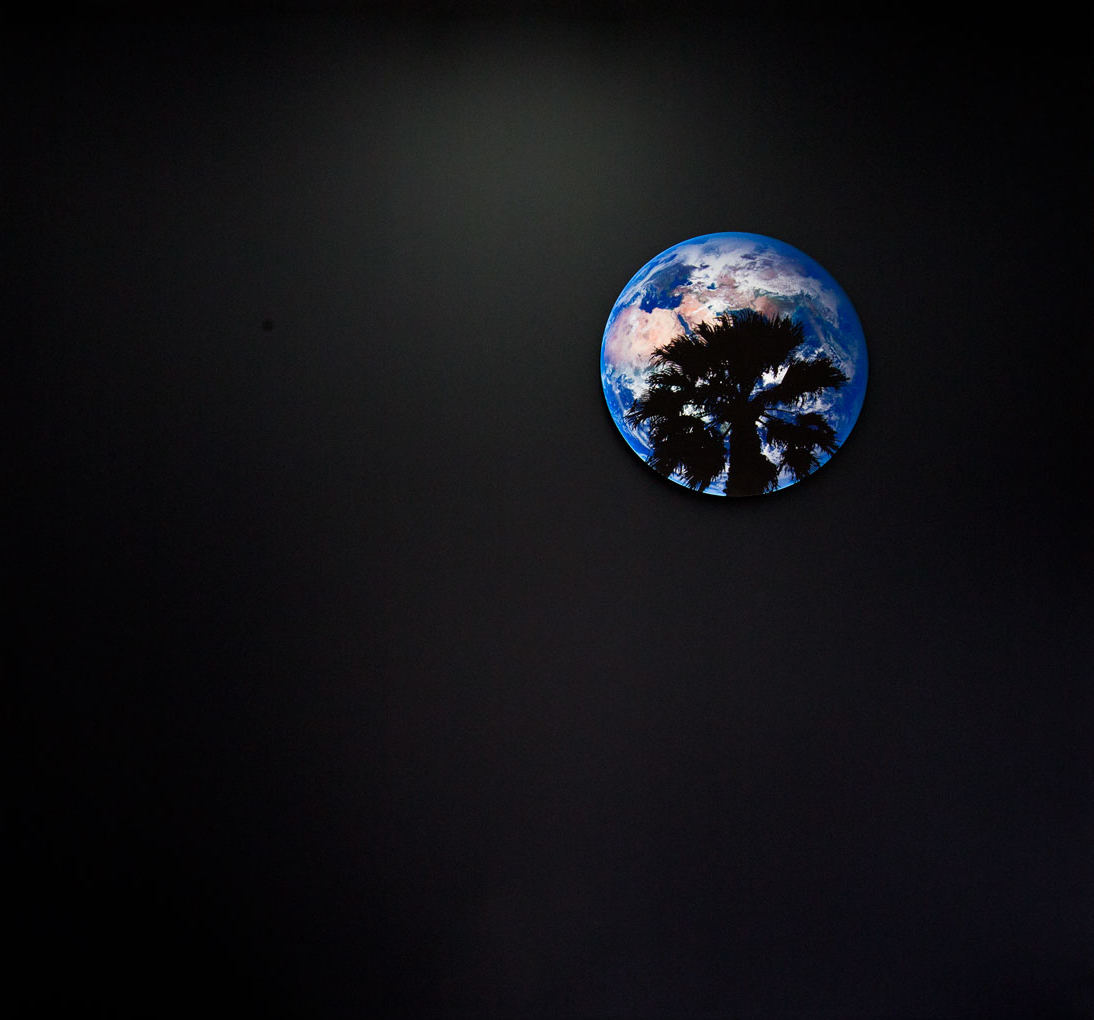
The Artist Who Makes Images Stare at Themselves
The one thing you should know about Krassimir Terziev, is that he don’t like borders. When in front of one, he admits, he cannot restrain himself from not crossing it, but also from doing "all sorts of things atypical for an artist". But this "perhaps infantile irresponsibility", as he offers to call it, the artist seems to apply, with no hesitation, to the works he creates, thus revealing an irresistible attraction to examine every aspect of our contemporary culture and all its imagery. His last exhibition Images Staring at Images at SARIEV Contemporary Gallery in Plovdiv makes no exception.
24 May 2018, text Desislava Mileva
.jpg)
As the title subtly suggests, the exhibition centres on the act of looking. Terziev explains his choice with the idea of a strange reciprocity: "There are no passive things, whether objects, media or images. Looking is an active process of constructing identities, worldviews, strategies, and tactics, and it does not belong to the viewer but is re ected in unpredictable ways in any form in the world. For Images Staring at Images, I referred to an anecdote stating that "looking at images is like looking at animals. ey provide their presence but expect a response in return". So, in this meeting there is a reciprocal striving for understanding because, contrary to common sense, only seemingly, the human perception is the sole active side."
.jpg)
Terziev's works resemble a game of an observer and an observed happening, within the exhibition, somewhere in that infinite space, forever pursuing human imagination with its thousands unknowns. But the universe, like every other aspect of our popular culture, is saturated with images that the collective imagination seems to constantly recycle and renew. And even if the Cold War space race has already worn out, one of its strongest images - the astronaut walking on the Moon - continues to intrigue the artist.
.jpg)
"The figure of the astronaut seems productive as a translation of the figure inhabiting that virtual, online, synthetic space of the screen. If the worldview of a person is formed through the screen, at one point it becomes easier to get into manic missionary roles than to ring at the neighbour’s door to ask for some salt. It is also about globalization as a process driven by the neo-liberal ideology that takes away oxygen from the local communities. e removed perspective of space allows us to look at and re-evaluate the notions of humanity that we somehow automatically take for granted, for normality."
Terziev, who uses images from the NASA database in some of the works, "for the aura of the original", does not hesitate to combine them with other found over the internet, in what he describes as "his work as an artist”, namely, a "dialogue with certain aspects of images that have become part of the collective imagination - genre, iconographic, historical and coming to the viewer with all their ideological and psychological weight".
.jpg)
Back on Earth, one of the most intense moments of communication between a camera and a drone ever to be seen is happening in his video "Between Flashback and Deja-Vu II", against the backdrop of some communist-era residential buildings in So a. In Terziev’s scenario, the viewer tends to forget that the absurd "confrontation" of the two machines is actually a human action, a look put into a frame. Acquired through the techniques of the structural lm, a strange, half-forgotten experimental movement from the 60’s and the 70’s, this approach is often explored by the artist. In Terziev’s video work, the purely human perspective is not as common as the removed, invisible, collective observer who seems to guide the camera. And knowing Terziev’s interest in popular imagery, it is not that surprising to find out that the artist defines precisely the video as his primary tool of expression. A part from the direct connection with popular culture, it is the relationship between photography and film that he considers at the basis of all the subsequent media.
.jpg)
Artist's experiments in the field of installation and sculpture are, however, of different nature. e physical properties of a media seem to be at the center of his interest. "Monument to the Time Elapsed II" is an intriguing example in this respect. e chosen technique - engraving - not only seals the most common image reflected on the screen of one of the most used devices today, but also enhances the extremely ephemeral nature of the images that are generally played on it every day.
Simultaneously exploring the inherent possibilities of different media to dialogue with each other and with the gaze of the viewer, Images Staring at Images also reveals the philosophical-conceptual approach of Krassimir Terziev to the images that build contemporary culture. e artist’s searches refer the images to themselves, questioning their ability to exist as autonomous objects possessing desires, needs and demands that the viewer today seems more and more accustomed to satisfying. Don’t ask yourself what we want from the images - advises the artist. ″The question is what the images want?″ And that seems as a million dollar question with no right answer.
Image credits:
Krassimir Terziev, Courtesy Sariev Contemporary and the artist
Exhibition views, Credit: Photo: © Maria Djelebova, 2018